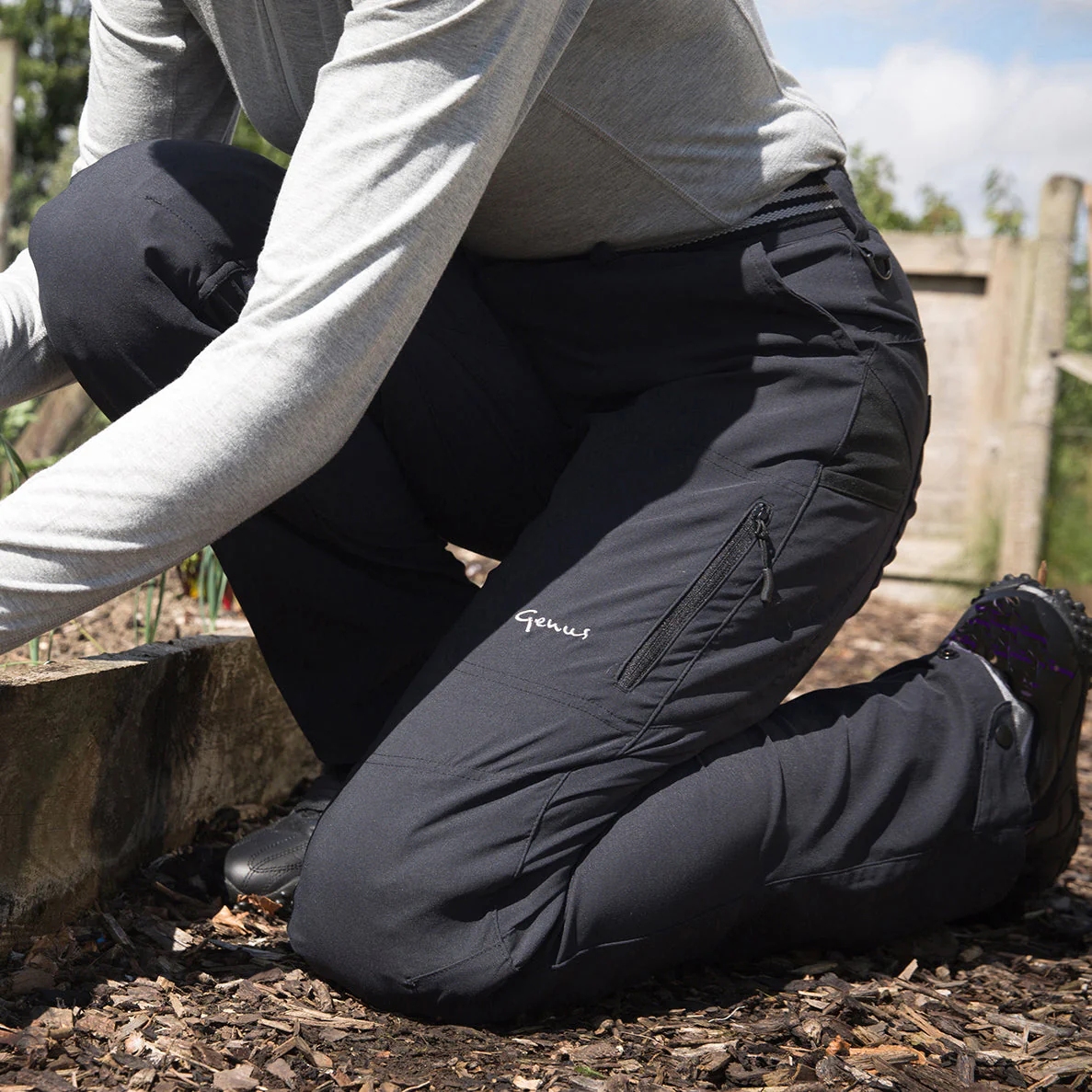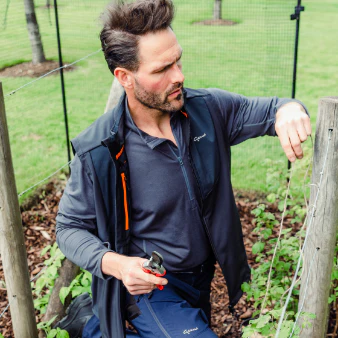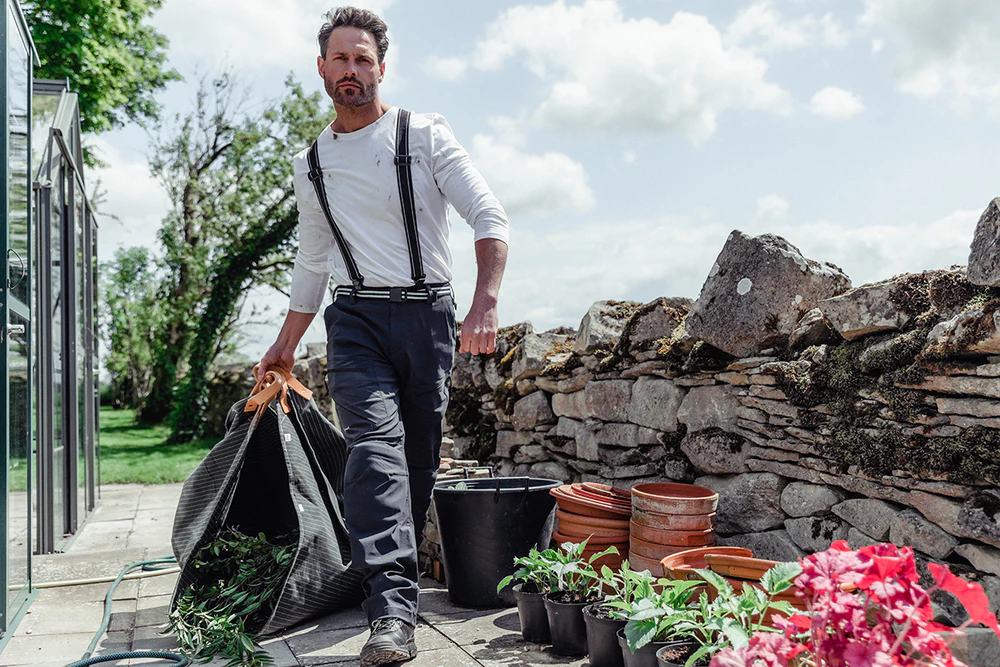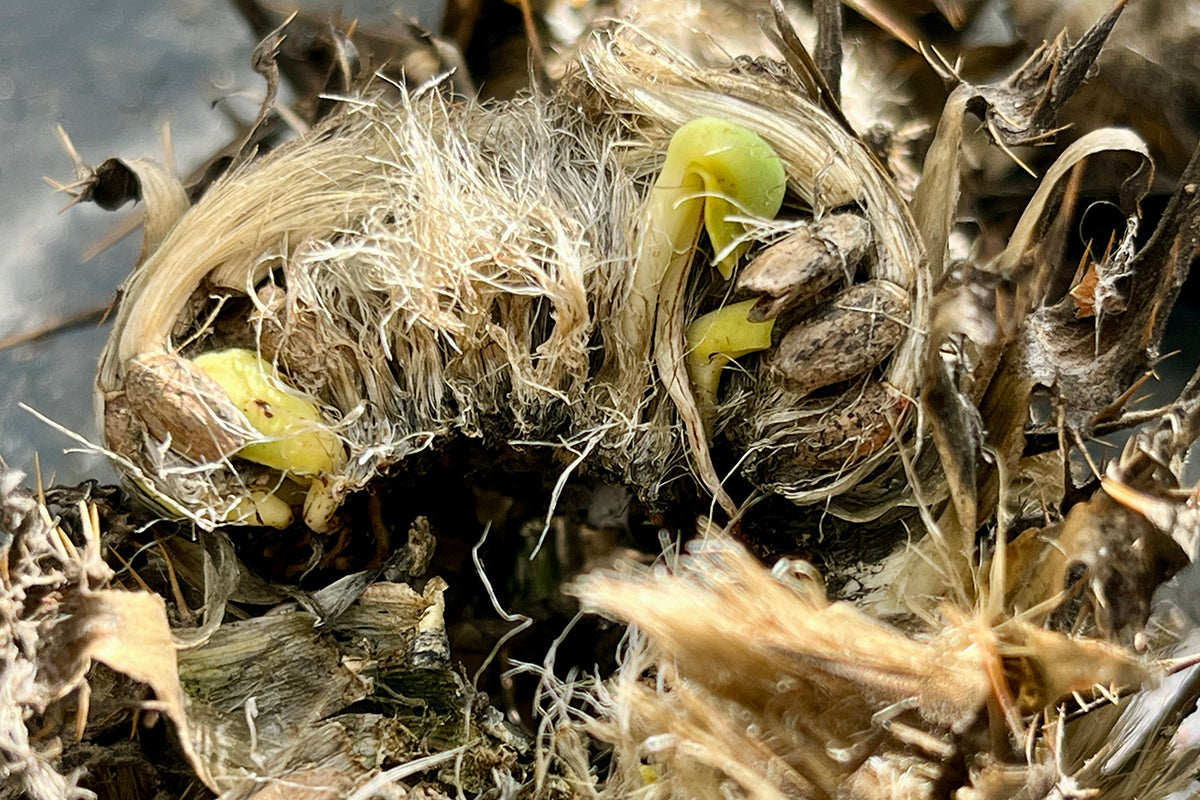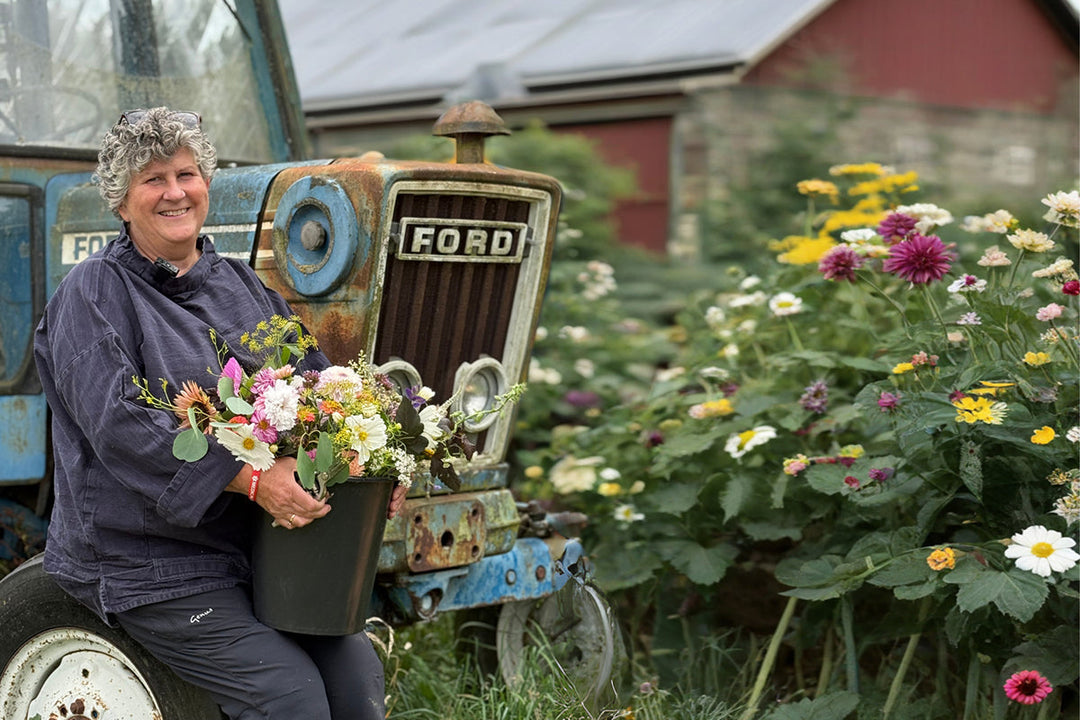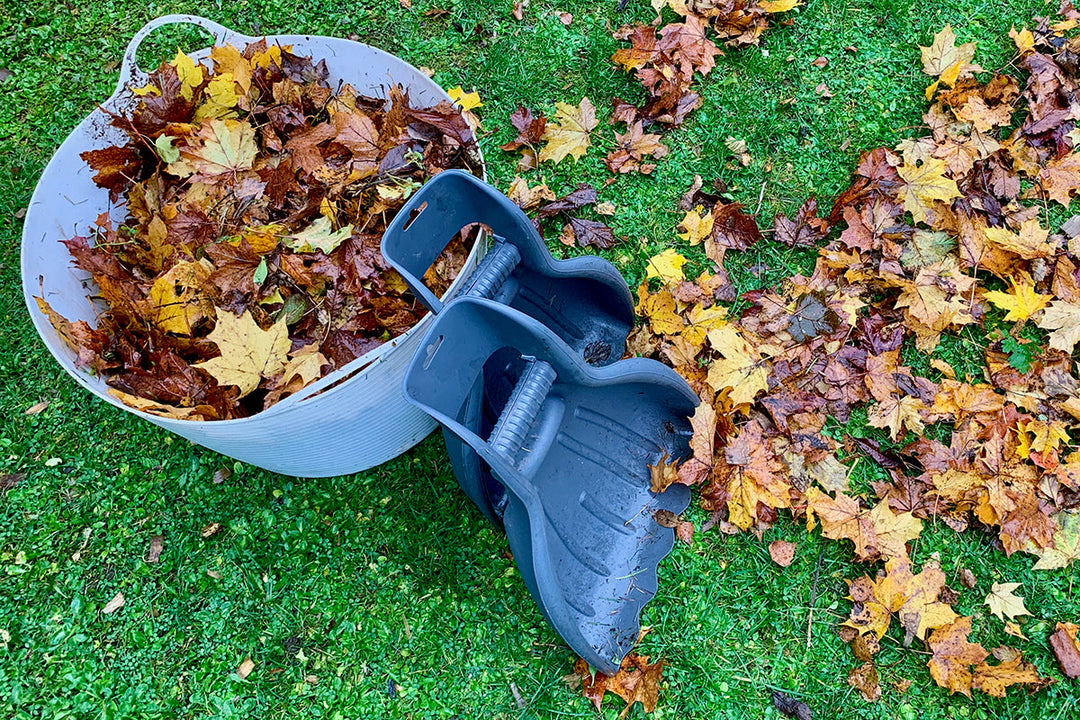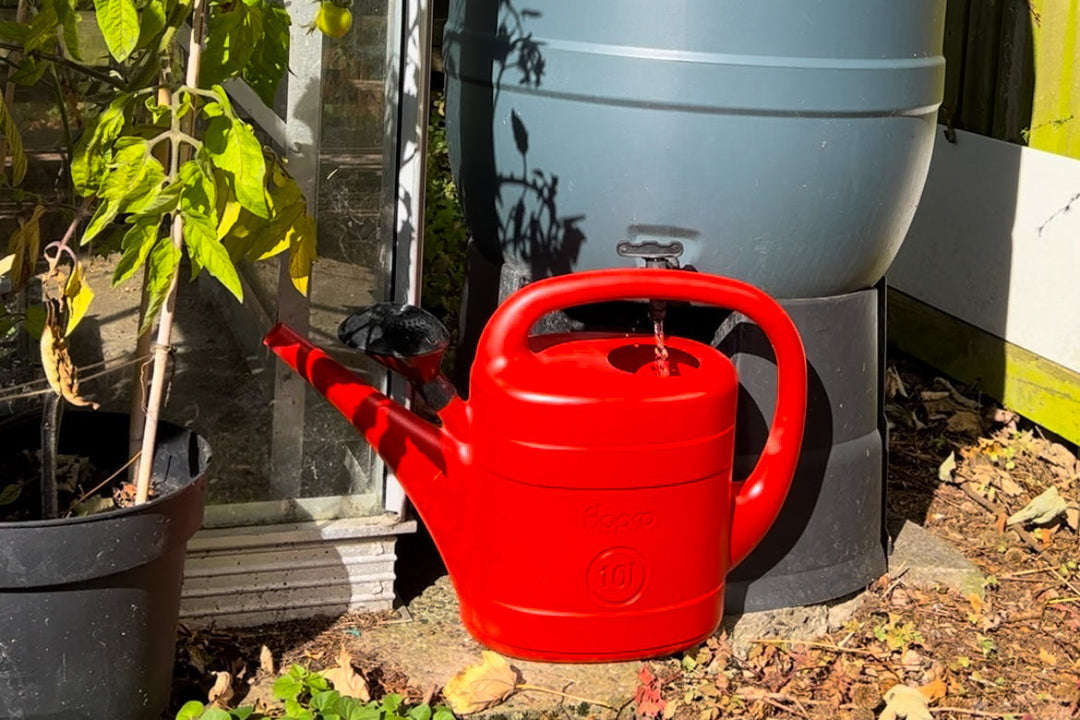Duvet Day

Last month we were busy weeding, cutting back perennials, and planting tulip bulbs in the flower garden. With that work completed, the beds were ready for a mulch to be applied. Very much like pulling a duvet over the borders, it’s no wonder people often refer to it as ‘putting the garden to bed for the winter’. (Of course, keen gardeners know that work never really stops in the garden!)
Our mulch is a mix of leaf mould, homemade compost, and coarse sand, and a decade of application has made our soil a pleasure to work with whatever the weather; previously somewhat sticky and wet, it’s now possible to dig without most of it ending up in the cottage on the bottom of our boots.
The combination of two parts compost to one part leaf mould and one part sand were mixed in one of the empty compost bays. With a solid concrete base it makes combining the ingredients together an easy job. A barrow was then filled and wheeled around to the flower garden where it was spread with a shovel. An extra inch or two of mulch is given to the dahlias affording them protection from any particularly cold frosts.
With all the shovelling, lifting, and wheeling it was the warmest job in the garden and the clothing layers came off one by one before the winter sun dipped behind the copse, chilling the air and requiring the layers to once again be re-applied.


